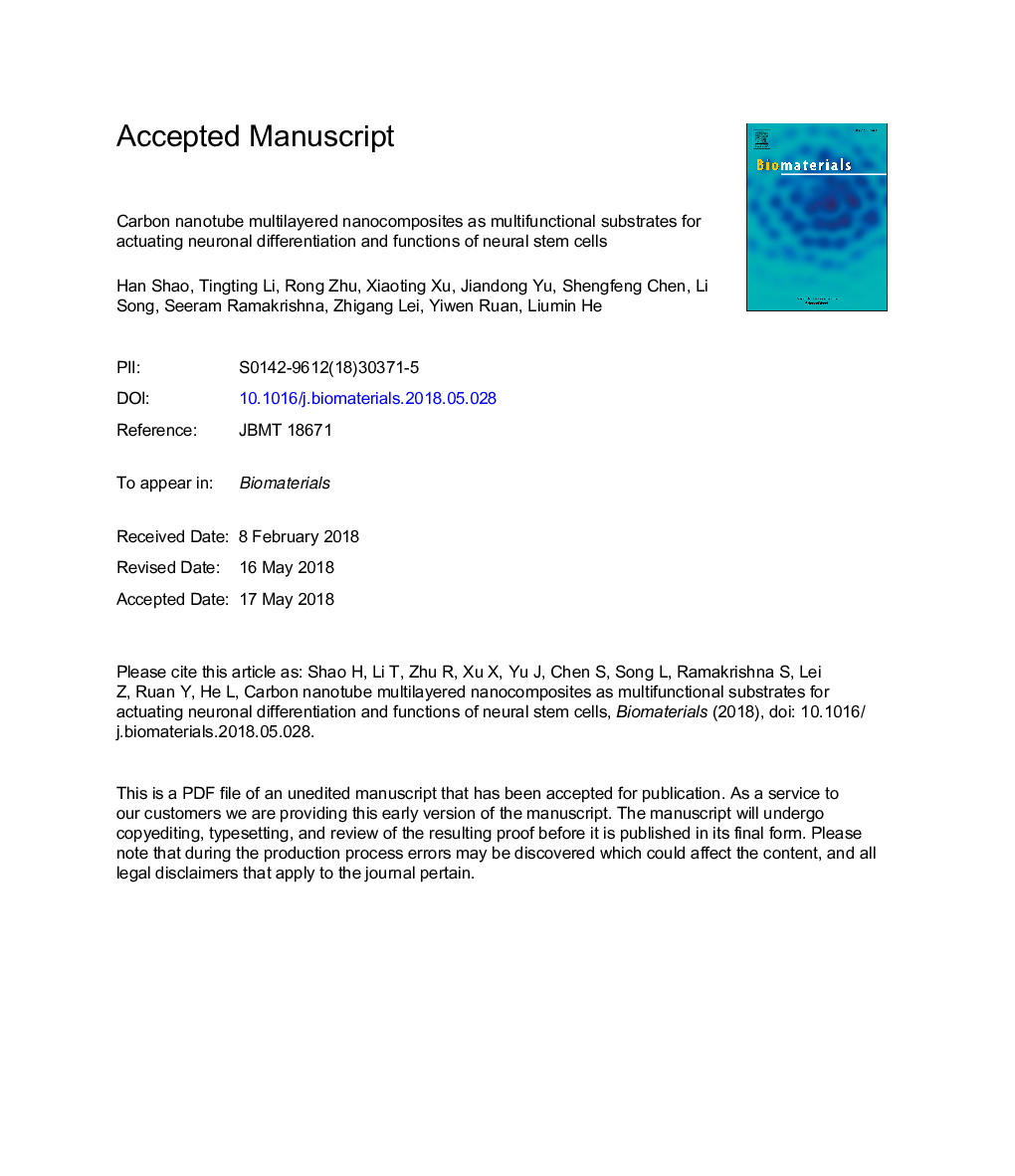| Article ID | Journal | Published Year | Pages | File Type |
|---|---|---|---|---|
| 6484452 | Biomaterials | 2018 | 43 Pages |
Abstract
Carbon nanotubes (CNTs) have shown potential applications in neuroscience as growth substrates owing to their numerous unique properties. However, a key concern in the fabrication of homogeneous composites is the serious aggregation of CNTs during incorporation into the biomaterial matrix. Moreover, the regulation mechanism of CNT-based substrates on neural differentiation remains unclear. Here, a novel strategy was introduced for the construction of CNT nanocomposites via layer-by-layer assembly of negatively charged multi-walled CNTs and positively charged poly(dimethyldiallylammonium chloride). Results demonstrated that the CNT-multilayered nanocomposites provided a potent regulatory signal over neural stem cells (NSCs), including cell adhesion, viability, differentiation, neurite outgrowth, and electrophysiological maturation of NSC-derived neurons. Importantly, the dynamic molecular mechanisms in the NSC differentiation involved the integrin-mediated interactions between NSCs and CNT multilayers, thereby activating focal adhesion kinase, subsequently triggering downstream signaling events to regulate neuronal differentiation and synapse formation. This study provided insights for future applications of CNT-multilayered nanomaterials in neural fields as potent modulators of stem cell behavior.
Related Topics
Physical Sciences and Engineering
Chemical Engineering
Bioengineering
Authors
Han Shao, Tingting Li, Rong Zhu, Xiaoting Xu, Jiandong Yu, Shengfeng Chen, Li Song, Seeram Ramakrishna, Zhigang Lei, Yiwen Ruan, Liumin He,
